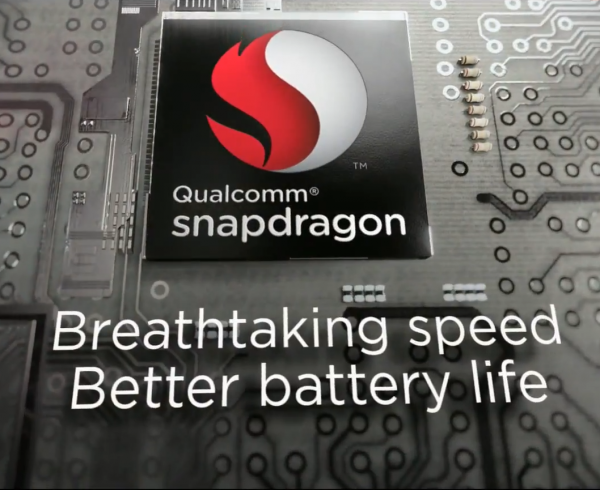Qualcomm enters the 64-bit mobile processor arena with Snapdragon 410

The main reason why 64-bit processors are needed is to utilize hardware configurations with more than 4 GB of RAM. To make this possible, the operating system also has to support the architecture, and apps have to be properly designed as well. This is the case with PCs which top the mentioned memory capacity and have the right software for it, but when it comes to mobile devices the advantages are mostly limited to bragging rights at the moment, with a few exceptions (like Microsoft's Surface Pro 2 -- it runs the 64-bit Windows 8.1 Pro and can be had with 8 GB of RAM).
Apple's iPhone 5s is the best example of why having a 64-bit processor offers no real benefits (other than allowing developers to adjust to the change): iOS 7 and the apps may support the architecture, but the smartphone ships with just 1 GB of RAM. This means that at no point is 64-bit needed, because the memory capacity does not warrant it. Former Qualcomm chief marketing officer Anand Chandrasekher was among the first to point this out, but here we are today with the US company also revealing its own 64-bit processor, dubbed Snapdragon 410.
At this point I should mention that Chandrasekher was demoted following his comments, with Qualcomm's upcoming processor likely being the main factor behind this decision. Still, the man was not wrong. Ironically, the US company makes no mention of the offered RAM in the Snapdragon 410 (probably because it too has less than 4 GB of RAM on board).
"We are excited to bring 4G LTE to highly affordable smartphones at a sub $150 (~1,000 RMB) price point with the introduction of the Qualcomm Snapdragon 410 processor", says Qualcomm senior vice president and chief operating officer Jeff Lorbeck. "The Snapdragon 410 chipset will also be the first of many 64-bit capable processors as Qualcomm Technologies helps lead the transition of the mobile ecosystem to 64-bit processing".
Notice how Qualcomm does not mention a single immediate benefit to using the 64-bit architecture, other than paving the way towards the next generation of software and hardware that will make the best of it (64-bit operating systems and apps and more than 4 GB of RAM, respectively). Chandrasekher's successor is more careful at choosing his words.
The Snapdragon 410 processor is manufactured using the 28nm technology, and features an Adreno 306 GPU, support for up to 13 MP cameras and 1080p video playback. The 4G LTE connectivity works with "all major modes and frequency bands across the globe", and is even compatible with dual SIM and triple SIM devices. Qualcomm says the chip was designed for Android, Firefox OS and Windows Phone.
The Snapdragon 410 will be offered for sampling in the first half of 2014, with in-device availability to follow afterwards. The processor is not aimed at high-end smartphones and tablet, as that role will be taken by the Snapdragon 805 (despite its lack of 64-bit credentials).